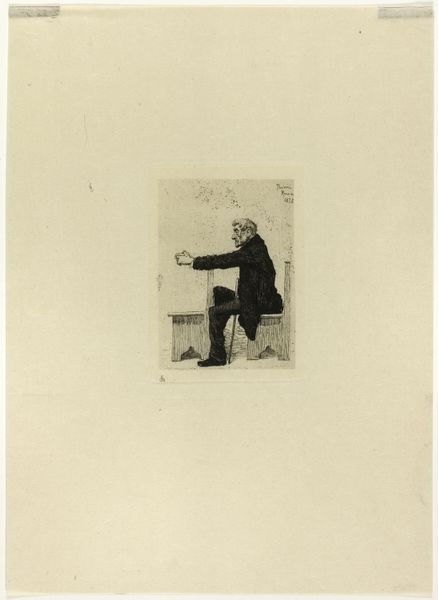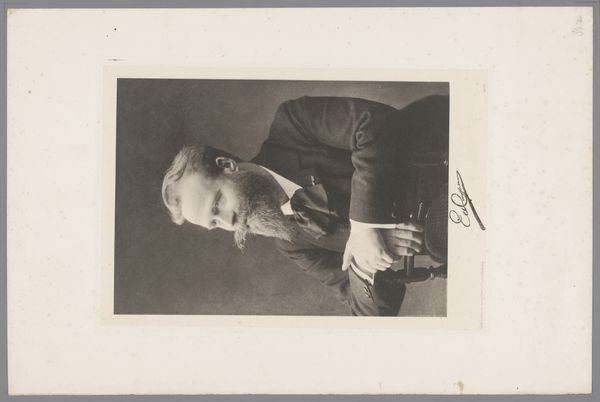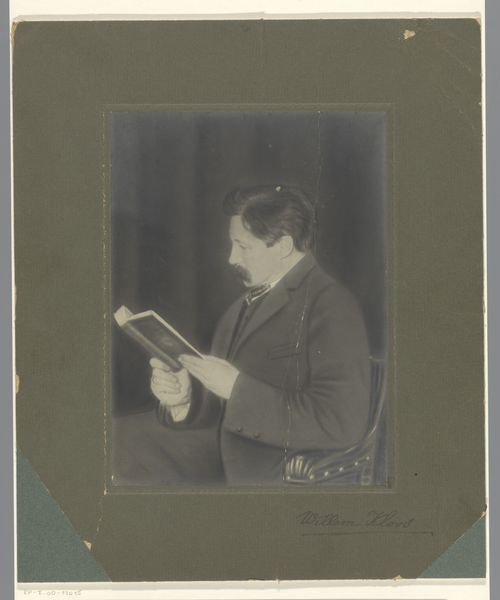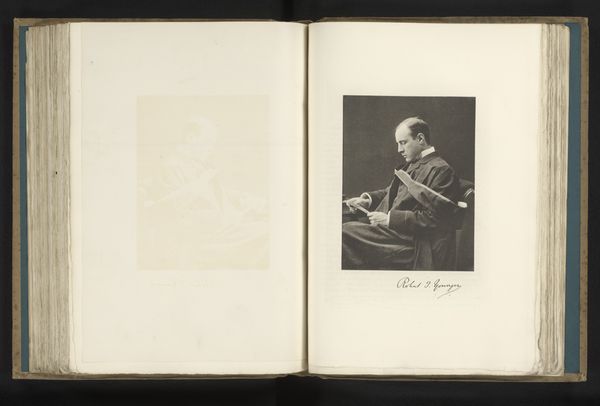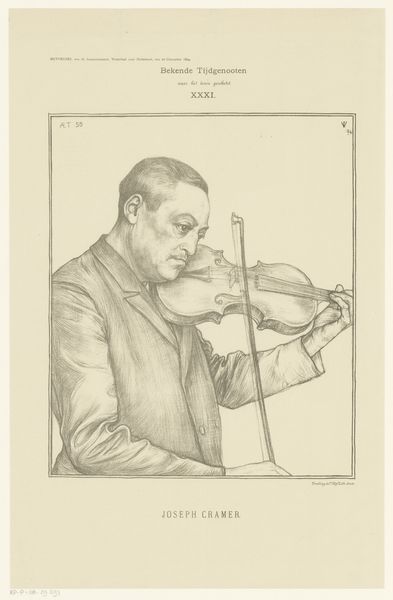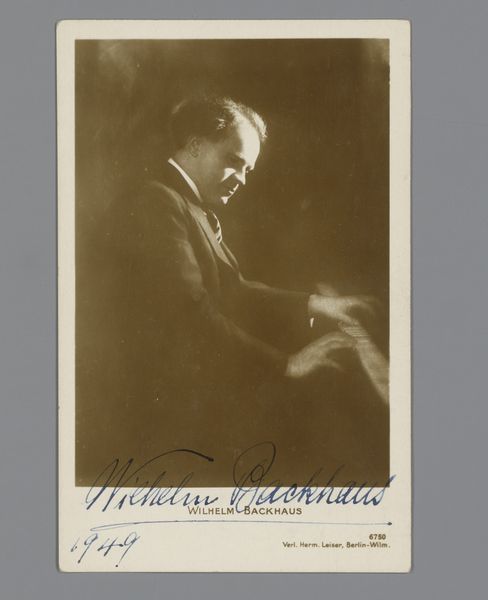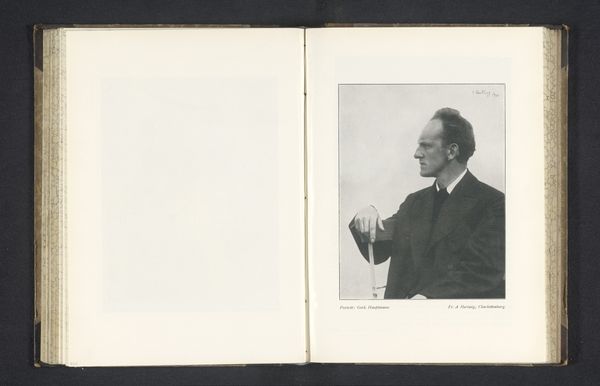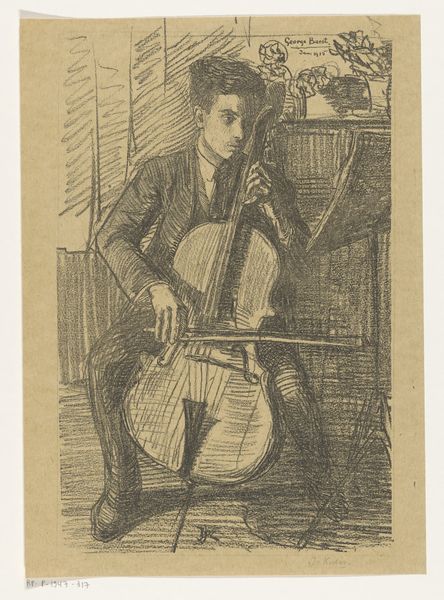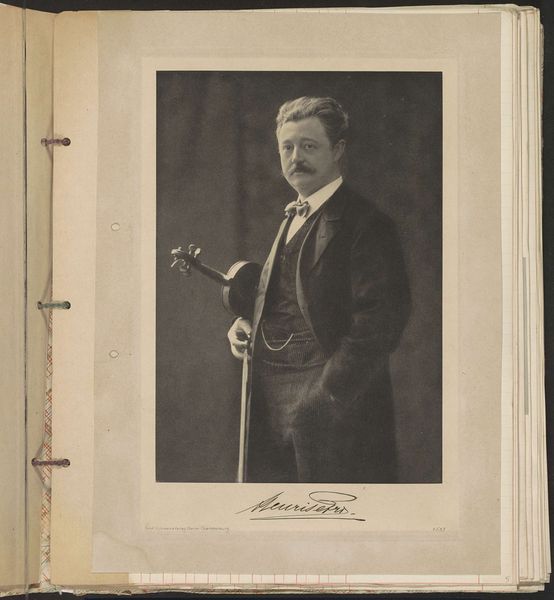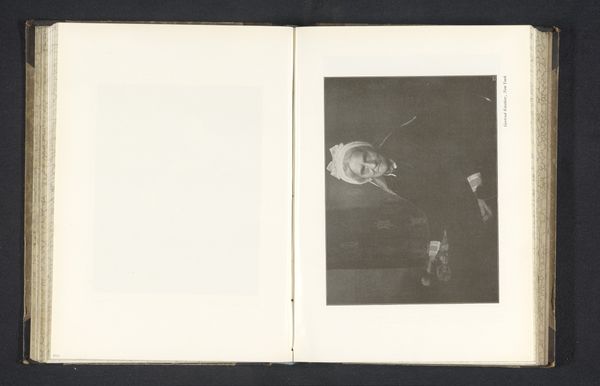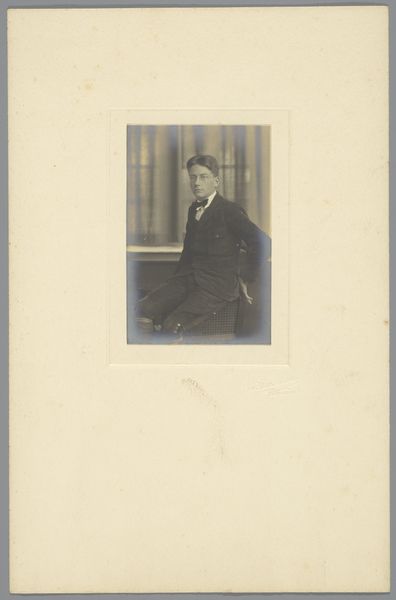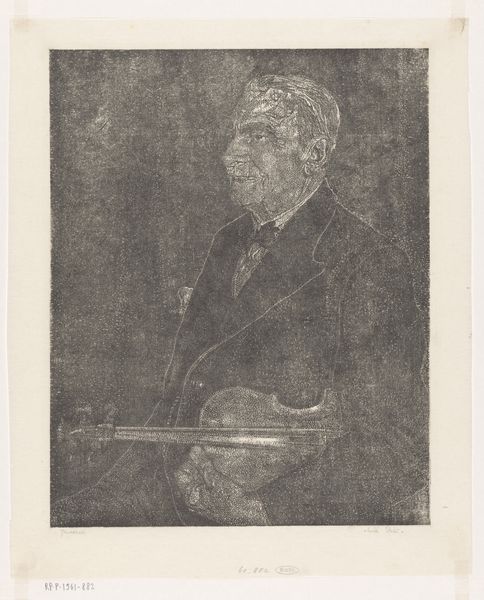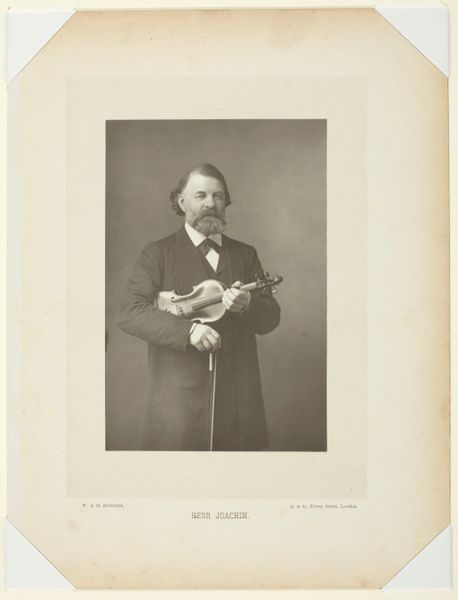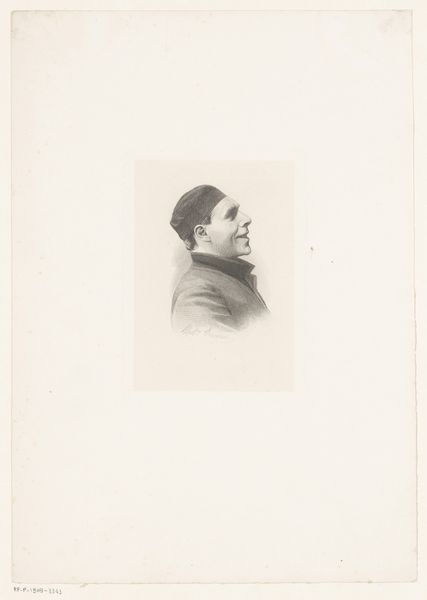
print, photography
#
portrait
# print
#
photography
Dimensions: height 249 mm, width 177 mm, height 373 mm, width 298 mm
Copyright: Rijks Museum: Open Domain
Editor: This is a portrait of violinist Bronislaw Huberman, a print made sometime between 1910 and 1930. It’s quite striking – the somber tones and shadowed background give it a very serious feel. What symbols or meanings do you see at play here? Curator: Indeed. Notice how Huberman isn’t looking at us; instead, he’s completely absorbed in the act of playing. The violin itself becomes an extension of his body, a vessel through which emotion and expression flow. This speaks to the Romantics’ idealization of the artist as a conduit for something larger than themselves. Editor: So, the violin represents more than just an instrument? Curator: Absolutely. It becomes a symbol of Huberman's soul, his passion. Think about what the violin represents culturally: virtuosity, artistry, even a kind of almost spiritual communication. The darkness surrounding him might then symbolize the inner world he’s exploring through the music, the almost painful intensity of artistic creation. Do you see how the focused light emphasizes the relationship between the artist and the art piece? Editor: That makes sense. The single light source creates a sacred, reverential feeling toward Huberman and his instrument. I hadn't thought about that at all. Thanks! Curator: The play of light and shadow in portraiture is designed to carry narrative meaning; to show an exterior presentation with an interior psychological state that the subject may reveal to us. Understanding that semiotic relationship unlocks a whole new realm of visual storytelling.
Comments
No comments
Be the first to comment and join the conversation on the ultimate creative platform.
